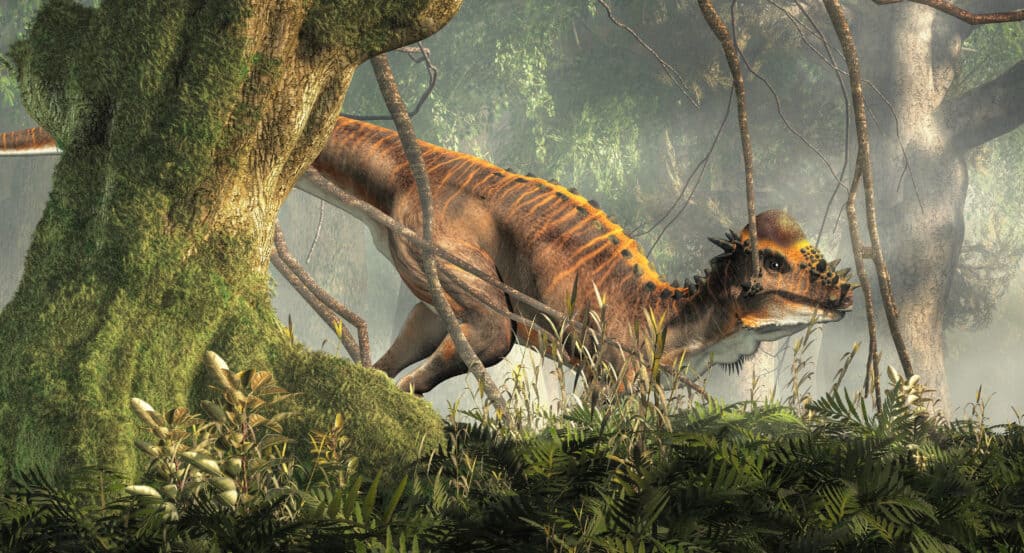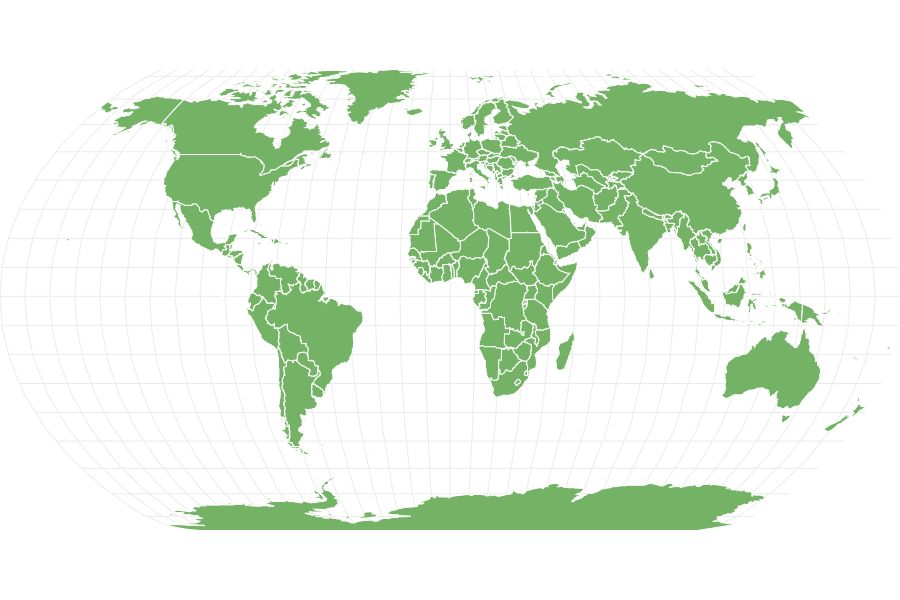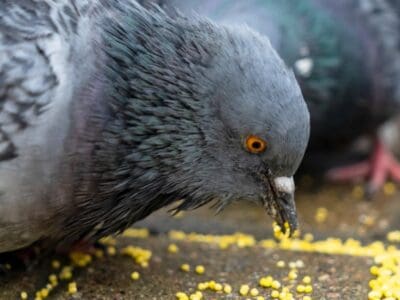Pachycephalosaurus
Pachycephalosaurus wyomingensis
The Pachycephalosaurus' head was up to 30 times thicker and stronger than a human skull.
Advertisement
Pachycephalosaurus Scientific Classification
- Kingdom
- Animalia
- Phylum
- Chordata
- Order
- Ornithischia
- Family
- Pachycephalosauridae
- Genus
- Pachycephalosaurus
- Scientific Name
- Pachycephalosaurus wyomingensis
Read our Complete Guide to Classification of Animals.
Pachycephalosaurus Conservation Status
Pachycephalosaurus Facts
- Fun Fact
- The Pachycephalosaurus' head was up to 30 times thicker and stronger than a human skull.
- Biggest Threat
- Giant carnivorous predators like the Tyrannosaurus rex, Allosaurus, Carnotaurus, and Velociraptors
- Most Distinctive Feature
- Pachycephalosaurus had a thick bony dome on its skull
- Distinctive Feature
- This dinosaur had an "S"-shaped neck
- Habitat
- Forests, woods, lowlands, fields, grasslands, meadows, and plains
View all of the Pachycephalosaurus images!
Pachycephalosaurus is an extinct, plant-eating dinosaur that lived about 76 million years ago. Its name, Pachycephalosaurus, which translates to the “thick-headed lizard,” best describes the dinosaur’s most notable feature—the enormous thick bone dome on its head. Pachycephalosaurus lived during the Late Cretaceous Period and is believed to be related to the ceratopsians. However, unlike these quadrupedal herbivorous dinosaurs, Pachycephalosaurus was bipedal. The dinosaur lived alongside other dinosaurs like the Troodon, Tyrannosaurus rex, Ornithomimus, and several other famous dinosaurs.
Description and Size

The longest member of the
Pachycephalosaurusgenus was nearly 15 feet in length.
©Daniel Eskridge/Shutterstock.com
Pachycephalosaurus is a genus name derived from the Greek terms “pachys” and “kephale,” which collectively translates as “thick head” and “sauros,” meaning lizard. The largest-known member of the genus was roughly as long as a modern car, measuring about 14.8 feet in length. The dinosaur weighed about 820 to 990 pounds. It had a heavy tail, long hindlimbs, short forelimbs, and a short, thick neck.
The bipedal Pachycephalosaurus had a sizable, 10-inch-thick, bony dome atop its skull. Apart from the dome, it had blunt bony knobs and short bony spikes projecting upwards from the snout. Scientists have theorized that the dome on the head of Pachycephalosaurus was for ramming predators or rivals during the mating season, like the musk oxen and bighorn sheep.
However, arguments exist that the Pachycephalosaurus skull roof might not have been adequate to sustain the impacts associated with ramming. The cervical and anterior dorsal vertebrae also show the neck had an S- or U-shaped curve instead of being straight. As a result, it could not have properly transmitted the stress from direct headbutting.
Pachycephalosaurus had a reasonably short and thick neck. They also had large, rounded eye sockets that faced forward, which suggests good eyesight and binocular vision. The dinosaur’s dentition consisted of teeth with leaf-shaped crowns and a muzzle that looked like a pointed beak. The protruding skull cap was a feature seen in adult Pachycephalosaurus. Juveniles had flat skulls with horns. However, as the animal grew, the horns would shrink and become rounder to form a dome.
Evolution and History
Pachycephalosaurus evolved sometime during the Late Cretaceous Period, about 76 million years ago. It belongs to the suborder Pachycephalosauria and is one of the most widely-known members of this group.
Experts think pachycephalosaurs may have evolved from Hypsilophodon. This was a small and agile bipedal herbivore that lived in England during the Early Cretaceous. Experts have also noted that Pachycephalosaurus had a closer affiliation to the ceratopsian group of dinosaurs (beaked, herbivore dinosaurs) than it did with the ornithopods.
This is interesting, considering the fact that this dinosaur was bipedal, a trait most commonly seen in ornithopods. Over the years, members of the ornithopod developed an evolutionary advantage over the ceratopsian, which is the development of a chewing apparatus. Ceratopsians, like pachycephalosaurs, on the other hand, retained their beaked mouth.
Diet — What Did Pachycephalosaurus Eat?
Scientists are not quite sure of the feeding habits of the Pachycephalosaurus. However, there are speculations that they were either herbivores or omnivores. This dinosaur had small, rigged teeth, and this suggests they could not have chewed on tough, fibrous plants effectively. At the same time, their sharp, serrated teeth would have proven effective for shredding plants. Nevertheless, most scientists agree that they were herbivorous and may have lived on fruits, seeds, and leaves.
Still, several signs point to a possible carnivorous diet. Their serrated, blade-like front teeth were similar to that of some carnivorous theropods. This has led to speculations that the pachycephalosaurs may have eaten meat as part of their diet. However, since there are no other pieces of evidence for this claim, it is safe to assume the Pachycephalosaurus lived entirely on plants.
Habitat — When and Where It Lived
The dinosaur lived during the Late Cretaceous Period, some 65 to 76 million years ago, and various other dinosaur fossils have been discovered in the exact locations the Pachycephalosaurus lived. Almost all Pachycephalosaurus fossils were recovered from the Creek and Lance formations of the western United States. As a result, scientists have good reasons to believe Pachycephalosaurus lived in forests, woods, lowlands, fields, meadows, grasslands and plains of Alberta, Wyoming, South Dakota, North Dakota, and Montana. Their habitat had trees, shrubs, grass, valleys, creeks, brooks, rivers, woodlands, ferns, ponds, and streams.
Besides coexisting with other dinosaurs, Pachycephalosaurus shared the area with invertebrates, birds, reptiles, and amphibians. The Scollard Formation is another place the Pachycephalosaurus called home. Like other habitats dinosaurs lived in, scientists believe the formation was a floodplain, with shrubs, woods, grass, ponds, forests, and fields in the plains. Pachycephalosaurus fossils have also been discovered next to the Scollard Canyon.
Threats and Predators
Pachycephalosaurus lived alongside giant carnivorous predators like the Tyrannosaurus rex, Allosaurus, Carnotaurus, and Velociraptors. It lacked any major defense mechanisms apart from its thick skull, and it probably used this for defense when cornered. However, this was probably not enough to deter big predators from killing it.
Discoveries and Fossils — Where Pachycephalosaurus Was Found
Ferdinand Vandeveer Hayden discovered the first Pachycephalosaurus fossil in 1859. The holotype consisted of parts of a skull bone. It was found in the Lance Formation near the River Missouri. American paleontologist, Joseph M. Leidy, described the skull fragment as some sort of skin armor that may have belonged to a reptile. As a result, he named the animal Tylosteus.
In 1930, famous American paleontologist Charles Gilmore described a part of a skull found in Wyoming’s Niobrara. He went on to classify the species under the genus “Troodon.” In 1943, American paleontologist Barnum Brown and Erich Maren Schlaikjer, a geologist and dinosaur hunter, discovered new specimens, including partial skeletons and skulls. The discoveries came from a dig site at the Lance Formation in Corson County, South Dakota, and the Hell Creek Formation in Carter County, Montana. The excavated fossils were named Pachycephalosaurus reinheimeri and Pachycephalosaurus grangeri, respectively.
Extinction — When Did Pachycephalosaurus Die Out
Pachycephalosaurus lived between 76 million and 65 million years ago during the Late Cretaceous Period. They died out during mass extinction at the end of the Mesozoic Era, known as the Cretaceous-Tertiary mass extinction. This extinction event wiped out this dinosaur and all the other land-dwelling dinosaurs and other megafaunas alive at the time.
Similar Animals
Animals similar to the Pachycephalosaurus include:
- Ceratopsia — Ceratopsia was a beaked dinosaur that lived in North America during the Cretaceous Period. Like the Pachycephalosaurus, ceratopsians had a large skull and could weigh up to 20,100 pounds.
- Ornithopoda — Ornithopoda is a three-toed-foot dinosaur that was one of the most successful groups of herbivores of the Cretaceous period. Although they were wiped out by the same Cretaceous-Paleogene extinction event, they were present in all seven continents.
- Tyrannosaurus rex — The T-Rex is one of the most recognizable and well-known dinosaurs. It is also among the most studied and is considered king due to its size, carnivorous diet, and behavior.
Related Animals…
View all 192 animals that start with PPachycephalosaurus FAQs (Frequently Asked Questions)
When was the Pachycephalosaurus alive?
Pachycephalosaurus was alive between 76 and 65 million years ago during the Late Cretaceous Period. Since they lived towards the end of the period, they died out during the mass extinction at the end of the Mesozoic Era.
How big was the Pachycephalosaurus?
Pachycephalosaurus adults were about 14.8 feet (4.5 meters) long and weighed about 820 to 990 pounds. The dinosaur was the largest pachycephalosaur to have ever lived.
How strong was the Pachycephalosaurus's head?
The roof of the Pachycephalosaurus skull was up to 10 inches thick, and the head is estimated to be about 30 times thicker and stronger than a human skull.
Is Pachycephalosaurus a meat eater?
No. Pachycephalosaurus was not a meat eater. It was a herbivorous creature that may have lived on fruits, seeds, and leaves. There are also speculations that it may have been an omnivore with a very diverse diet.
Thank you for reading! Have some feedback for us? Contact the AZ Animals editorial team.
Sources
- Extinct Animals, Available here: https://www.extinctanimals.org/pachycephalosaurus.htm
- Wikipedia, Available here: https://en.wikipedia.org/wiki/Pachycephalosaurus#History_of_discovery
- Dino Wiki, Available here: https://dinopedia.fandom.com/wiki/Pachycephalosaurus?so=search#Lifestyle


















